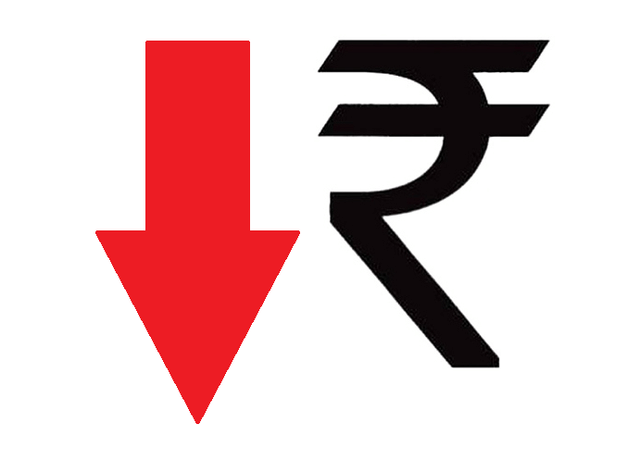Economy
Rupee Falls: 3 Reasons to Explain It All

Rupee symbol
The rupee fell to a rate of 63.68 against the dollar yesterday. The Indian currency has not been in this region since last November, when the downward slide of the rupee was particularly steep. Here are three reasons which explain this descent of the Indian currency.
1 – High Trade Deficit:
According to the data released by the Ministry of Commerce on Monday, India’s trade deficit for November stands at an 18-month high. This simply means that not since 18 months has the difference between India’s imports and exports been so large. It follows then, that the demand for dollars in India in November was high, and that in turn, strengthened the dollar against the rupee.
2 – Fears of Global Slowdown
As explained in this FirstBiz piece by Rajesh Pandathil, the rupee is also bearing the brunt of fears of the slowdown of the global economy. Oil has fallen below $60 a barrel. While one reason for this is the increased domestic production of America, another reason is that the global demand for oil, especially from Europe and Japan, has fallen. A low demand for oil signals a slowdown of industrial activity and domestic consumption. That is another word for economic slowdown.
While right now things have not come to such a pass, the markets are nonetheless wary of such a situation. Foreign investors hence, are expected to move to safer markets, leaving currencies like the rupee weakened.
3 – Financial Crisis in Russia
With the price of oil plummeting, Russia, a major exporter of oil is staring at a financial crisis. The Russian rouble has been in a free-fall against the US dollar, prompting a massive rate hike in Russia. This crisis has sparked fears of foreign fund outflows and is being seen as affecting the value of the Indian rupee.
It’s Not Necessarily Bad News
1. An increased trade deficit implies increased imports. Indeed, non-oil imports have increased by close to 50% since last year. This signifies increased domestic economic activity and augurs well for future growth.
2. Given the current state of low inflation and adequate foreign reserves, India can withstand the current rate of rupee at 63-64/$ till next year, by when it is expected to return to the low 60’s.
3. A low price of oil, which is seen as precipitating the current fall in rupee, is in India’s interest in the long-term.
Photo Credit : usgraduatesblog (featured image)
Support Swarajya's 50 Ground Reports Project & Sponsor A Story
Every general election Swarajya does a 50 ground reports project.
Aimed only at serious readers and those who appreciate the nuances of political undercurrents, the project provides a sense of India's electoral landscape. As you know, these reports are produced after considerable investment of travel, time and effort on the ground.
This time too we've kicked off the project in style and have covered over 30 constituencies already. If you're someone who appreciates such work and have enjoyed our coverage please consider sponsoring a ground report for just Rs 2999 to Rs 19,999 - it goes a long way in helping us produce more quality reportage.
You can also back this project by becoming a subscriber for as little as Rs 999 - so do click on this links and choose a plan that suits you and back us.
Click below to contribute.
Latest